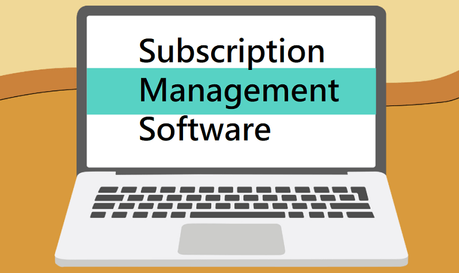The concept of billing dates back to the early days of history, by this we mean in a time when transactions were recorded on clay tablets, and ever since, the process has remained a core aspect of a successful business.
Other than the role of keeping the cash register chiming, a billing process is vital to ensure a successful relationship with your customers. Having a robust billing system means the customers know what they are paying for, when to cough up the cash, and why.

When a takes the leap from one-time purchases into the realm of subscription billing, it becomes more prominent than ever.
A subscription billing platform is like the gear that keeps all of the other cogs moving (and vice versa) such as accounting, invoicing, subscription management, fraud management, payment processing, and more.
It keeps things ticking over as they should, and it's especially crucial for a SaaS business that is looking to scale and achieve big things.
Our guide is here to help businesses who strive for soaring success, and to help you choose the right platform for you.
Understanding Subscription Management
Let us begin by explaining that subscription management involves managing the preferences of your subscribers throughout their customer lifecycle.
Your product catalog and pricing, subscriber information such as transaction history, add-ons, billing cycles, and associated subscriptions are stored within a subscription management system.
This might include managing any grandfather for associated pricing changes, trial management, trial to subscriber upgrades, cancellations, and downgrades from an entire subscription cycle for a SaaS business.
So, how is subscription billing different?
When compared with subscription management, subscription billing is about billing subscribers on a recurring basis. A successful subscription billing platform will determine.
- How payments are collected.
- When subscribers should be billed.
- Which subscribers should be billed.
- How much a subscriber needs to be billed.
- the product or service they are being billed for.
- Which subscription data is required for reporting.
How about Recurring billing?
Recurring billing involves billing customers or subscribers regularly for a set fee instead of billing as a one-off. Subscriptions could be anything from software usage to magazines or video streaming, which will usually follow a recurring billing process.
SaaS businesses will require the management of pricing such as whether it will be tiered, metered, or volume-based. And there will be either a weekly, monthly, or annual billing cycle, along with an understanding of whether handling collections and invoice sending will be done automatically.
Why use subscription billing software?
One of the main reasons businesses use (and often need) a subscription billing platform is because it streamlines the billing process allowing you to see the fruits of your labor more clearly, that is, the labor involved with serving your customers.
In other words, offering a variety of payment options such as PayPal, credit or debit cards, wire transfer, ACH, Amazon Payments, cash, checks, etc. to collect payments from your customers. The other significant attribute is allowing you to manage and automate the manual side of subscription management. By this, we mean.
- Billing such as taxes, credits, discounts, prorations, scheduling, logic, and calculations.
- Checkout processes such as compliance, trials, and freemium.
- Invoicing transactional emails, who you need to invoice, and the invoice format.
- Subscription grandfathering, the customer portal, and pricing models.
- Accounting, including deferred revenue, rev recognition, reconciliation, A/R, and integrations.
- Collections, payments methods such as Amazon Pay, PayPal, transaction recovery/dunning.
- Analytics that require reports, SaaS metrics that are real-time and accurate.
As you'll see, you would otherwise require the assistance of a developer with heaps of time on their hands to complete these tasks. That would mean initial setup, and then looking after the codebase.
Allowing businesses to utilize these features out of the box means the subscription software can turn a mundane and manual headache into an advantageous way to scale.
How do integrations work?
Billing and management solutions require other components to function efficiently, which means you should have solid interaction with other software to ensure it works well.
- You could use Natero for customer success.
- Groove, Zendesk, Intercom, or Freshdesk for the helpdesk element.
- Avalara for taxation.
- Google Analytics, ProfitWell, ChartMogul, or Baremetrics for analytics.
- Slack or PieSync for collaboration.
- ReferralCandy, Refersion, Klaviyo, or Mailchimp for marketing .
And how about User Access Level Controls?
Recurring billing platforms and subscription management relies on a mix of functionalities. There will be a plethora of business roles that use the system for different purposes, so it is important to get user access levels correct from the get-go.
You could ask these questions to understand where particular user roles should sit.
- Are user-level privileges allowed?
- Can each user have action-levels privileges enabled?
- And can you control back-office access with varied permissions and roles?
- Can you utilize data level ?
- Is single sign-on or multi-factor authentication available for security support of the platform?
What are the Reporting and Analytics options available?
Seeing as revenue is a core purpose of data collection from this platform, you should expect to have detailed analytics available when you need them.
This might include deferred revenue reports, Churn, ARR and MRR at the very minimum. There should be diagnostic capabilities and accurate reporting along the way to ensure an in-depth analysis.
A mature system should have these details at the heart of the platform.
- Metrics for subscriptions.
- Auditing and finance reporting.
- Cart abandonment and operational reports.
- Reporting for churn.
- Various dashboard customizations.
- Reports on revenue that allow details such as geographics, acquisitions data, subscription segments and coupons.
We hope you've found our subscription billing platform guide useful, please drop us a line in the comments if you have any or queries.

